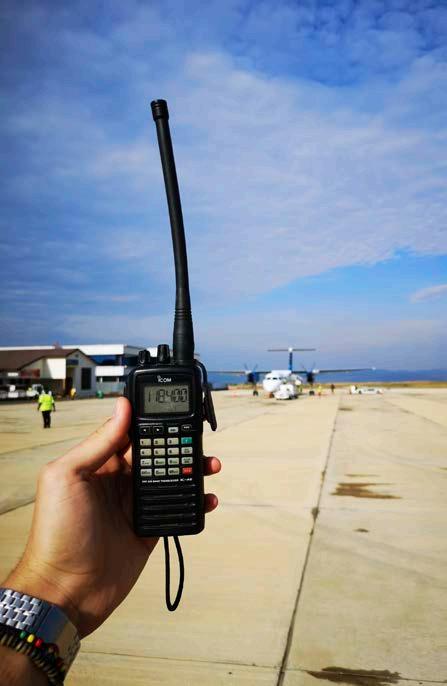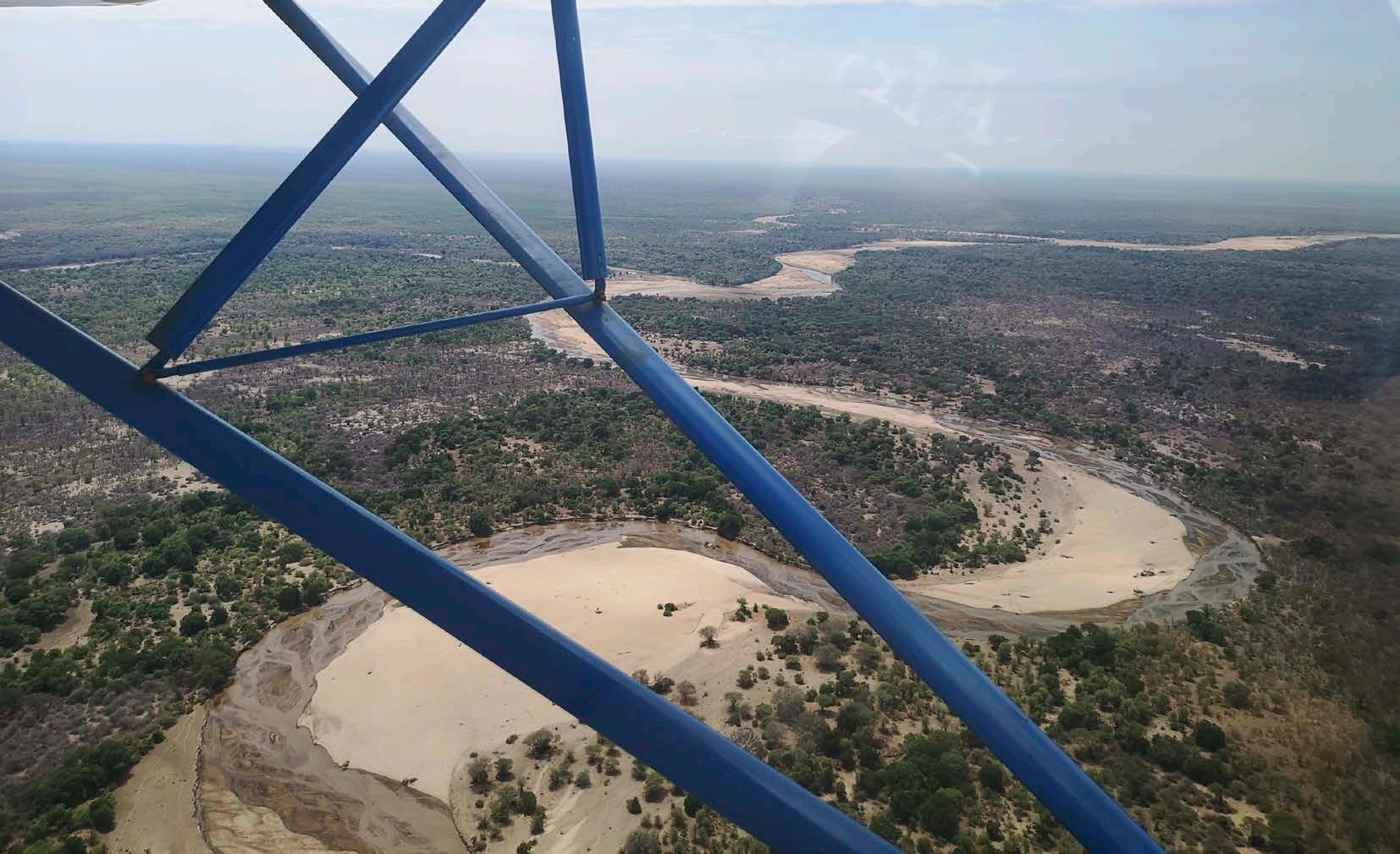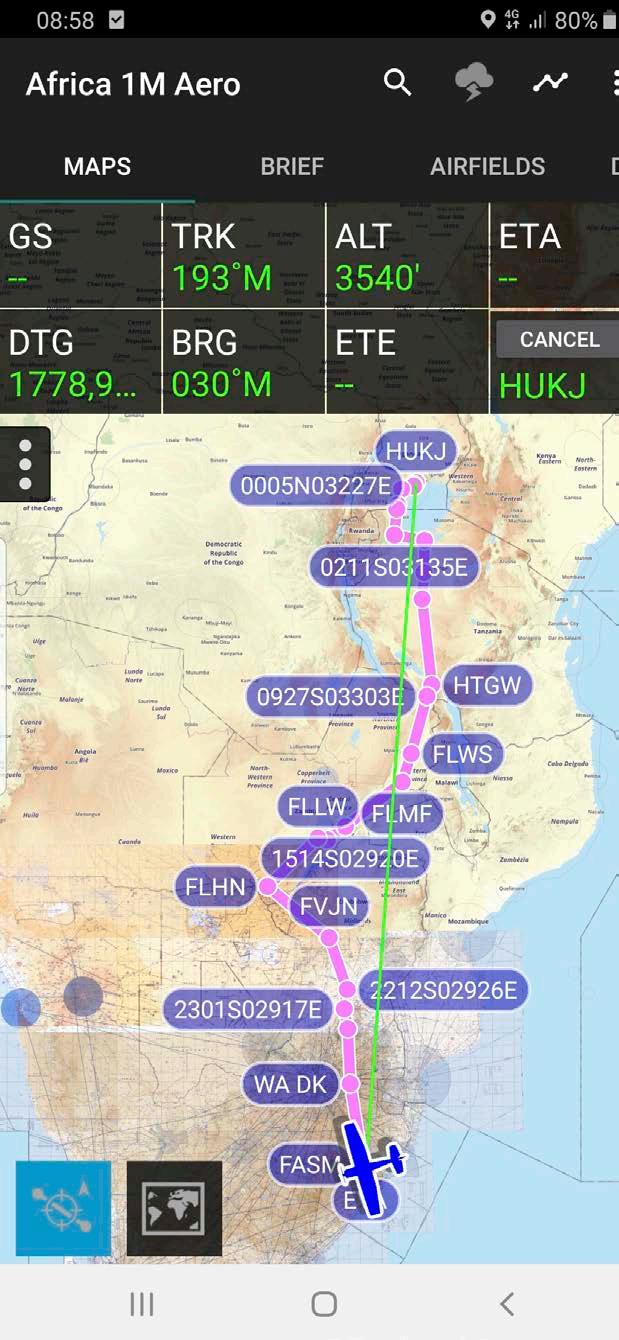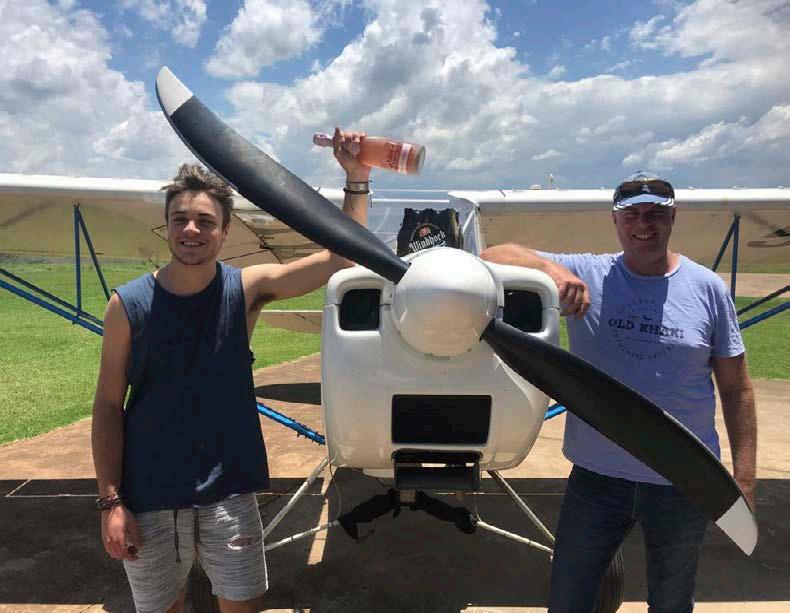
7 minute read
Savage Barn Find in Uganda
Part 3 Savage Photos by: Crai Lan and Tyron Gibbs BARN FIND IN UGANDA THE FLIGHT HOME
In Part 2 our intrepid plane rescuers took three days to fly the Savage Cub from Uganda, down the eastern shore of Lake Victoria, to Shongwe – ‘the armpit of Africa’ in Tanzania. For this, the final episode of this saga, we take up the story with them finally having managed to get a workable radio and trying to get out of Shongwe as fast as possible.
Advertisement
DAY 4: Before anyone could change the ATC’s minds, we were airborne and routing for Mfuwe, in the Luangwa National Park in Zambia, where we planned to clear customs, refuel and push on to friends near Mazabuka. A few miles out of Songwe I spoke to ATC, then switched off the handheld radio to save the battery, as we still had no charger.
Cutting over a corner of Malawi, we entered Zambian airspace and enjoyed the peace of flying for hours over the remote Luangwa National Park, every now and again passing over the Luangwa River with an occasional herd of elephant or a lone hippo passing below.
Luckily, we could talk on the intercom if we pressed the PTT, despite the radio being dead.
I planned to land at a small airstrip called Mwaleshi which appeared to be on the edge of the Luangwa NP, in order to top up our tanks from the jerry cans, and to have a stretch. The Savage cockpit is not designed for 6’3” pilots for extended periods.
Wary of landing in a National Park, I warned Tyron that we would do a steep approach from 1000 ft, land, refuel and in 10 minutes be back in the air. The heat on the runway was extreme - 40 degrees plus, so we emptied bladders and quickly refuelled, before getting airborne again.
Once in the air, we noticed a small guard hut about 1 km from the runway, and just hoped they hadn’t noticed us.
We pushed on another hour to Mfuwe where we managed to raise the ATC from a few miles out and landed without incident. It was fortunate that I had a pair of cell phone earphones to plug into the radio that I could place in my ears under my headsets when I needed to use the radio.
Once we had cleared customs and paid landing fees, I sent Tyron off with a local driver to get fuel. While waiting for him, I was summoned to the tower, and asked by the ATC if I had landed inside the Park. Not wanting to lie to him, I said we had made a technical stop to refuel and were on the ground only 10 minutes. I was asked to write a report for the Park authorities, stating it was a technical stop, and was required to have my aircraft inspected to make sure we had not picked anything up in the park, like a rhino horn or tusk. The ATC was friendly and seemed content with my report. A short while later I was escorted to inspect the Savage. One of the inspectors seemed a little confused, and eventually asked me how I knew there was fuel waiting for us in the park? Trying my hardest to keep a straight face, I showed him how we had refuelled, and explained that Tyron had taken along the jerry cans to fill up in town.
Refuelled and given the green light to leave, we launched for another long stretch to Delta Farm airstrip near Mazabuka, where we would spend the night with the Strovers, old acquaintances from my Maritzburg Varsity days, and now farming
Safely tied down in Songwe, but with a broken radio.
sugar cane and maize on the Mazabuka flats southwest of Lusaka. We hangared the Savage next to Raymond’s new Savannah
and went off to enjoy the hospitality of his family and the comfort of a decent bed and shower...and some fabulous tender chicken!!

“I read you 5” was the best transmission I have ever received over the radio.

It had been seven hours of flying in extreme heat, and we felt it.
DAY 5: The Strover’s had fuel for us, and with a flight plan filed, we set off for Livingstone, covering the distance in good time. The new airport in Livingstone is modern, clean and efficient, so we were quickly refuelled and cleared for Bulawayo, with instructions to remain clear of the busy sight-seeing traffic over Victoria Falls.
The further south we flew, the more picturesque the scenery became and passing over the Hwange National Park, we found large concentrations of big game. Dodging dark CBs we landed in Bulawayo, refuelled and had just pushed the Savage into one of the GA hangars for the night when the heavens opened.
Friends of Tyron’s folks, Gerard Stevenage, a local vet, and his wife Anwen picked us up, and fed us copious amounts of craft beer and a great meal in typical Zimbabwe-style hospitality, before we crashed, exhausted, for the night.
DAY 6: The next morning we made good time across the border into South Africa to Polokwane, where we landed to clear customs and refuel. Customs delayed us by at least an hour, with SARS questioning us on duties and taxes on the aircraft.
This was eventually resolved, and we were airborne around 1 pm, and heading southeast towards dark and stormy skies. We passed through a few showers and around a couple of large storms in the Loskop Dam area, before eventually getting into heavy weather approaching Hendrina. Luckily, I knew of a farm strip that belongs to WA de Klerk, a farmer in the area who flies. We landed on his strip

and taxied to his hangar. A phone call later, and WA had opened his hangar to us, as well as his guest room, and we spent a great evening with him.
DAY 7: We were airborne from Hendrina just before 10 am due to low cloud and showers, but once we crossed the escarpment the skies began to clear as we approached Newcastle. It really dawned on us the further into South Africa we flew, how free and fortunate we are to have the flying we so enjoy. Our scenery, in my opinion, is far more dramatic and beautiful than anything we saw between Uganda and the Limpopo. Our CAA and the regulations that govern GA and sport flying is unique in Africa, and we should be grateful for this freedom. I fly between 400 and 500 hours a year, low and slow over southern Africa, and I will never take what we have for granted again.
The spectacularly green KZN Midlands signalled our arrival home, and we circled over Eva’s Field in Hilton, where our welcoming party awaited us with a bottle of champagne and ice cold beers…
The little Savage had been extraordinary. We had flown 30 hours over 6 days, averaging 82 kts. For an aircraft that had been parked for five years, this was no mean feat. Her reward, now registered as ZU-IPZ, was a complete facelift and huge upgrades to all aspects of the airframe and instrument panel. The result is a barely recognisable aircraft.
A huge thanks to Tyron Gibbs, who trusted me enough to join me on the trip of a lifetime, helped with flying and other duties, and generally kept the humour levels up. Thanks to all the folks along the way who helped with advice, fuel, a place to lay our weary head and with other logistical support. My mate Deren who kindly let me borrow his PLB - you gave us all great peace of mind knowing we had friends and family watching our every move.
And lastly, thanks to an amazing little aircraft that carried us without as much as a hiccup over some of Africa’s most remote areas. We are truly blessed to live and fly in South Africa. If you don’t believe me, take a trip north.



Celebrating the safe arrival back at Eva's Field.
NEW WEBSITE

The Savage Cub resplendent in its new finish.









